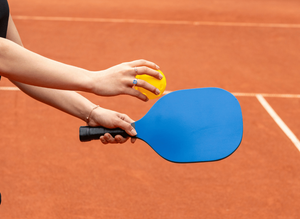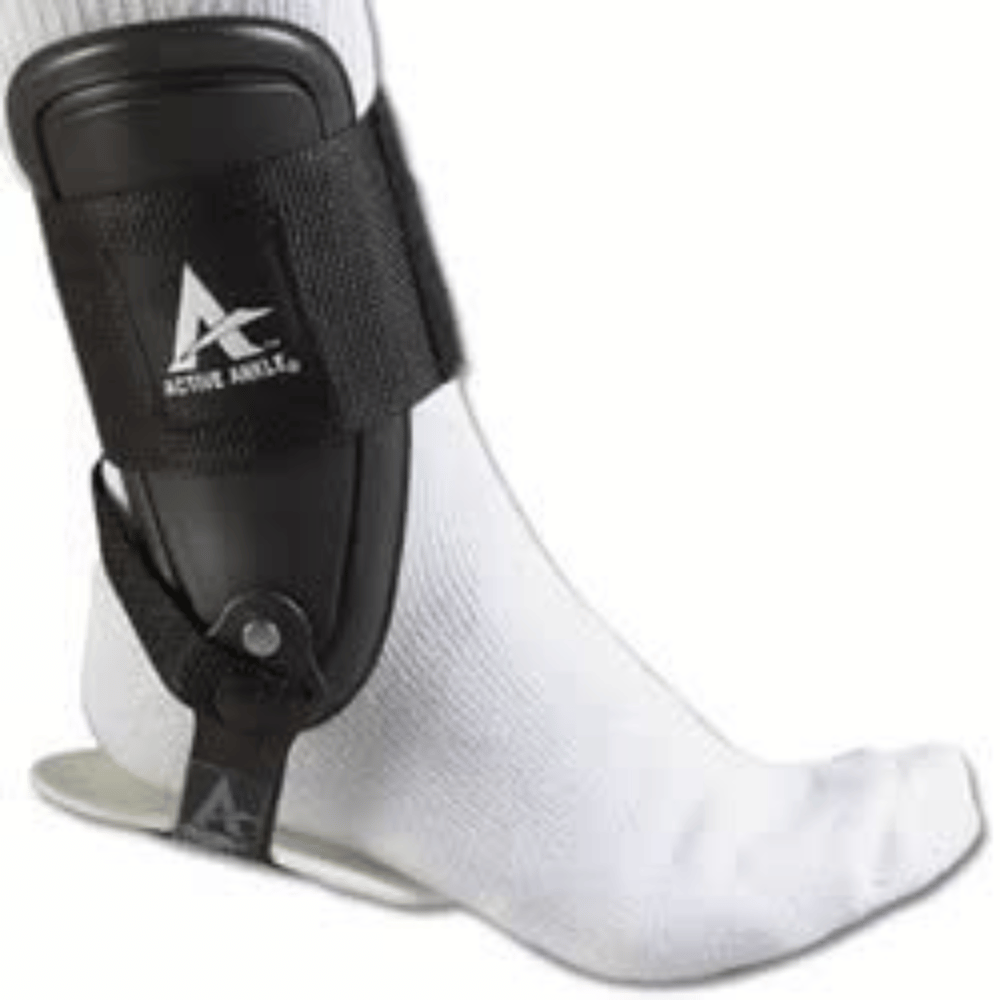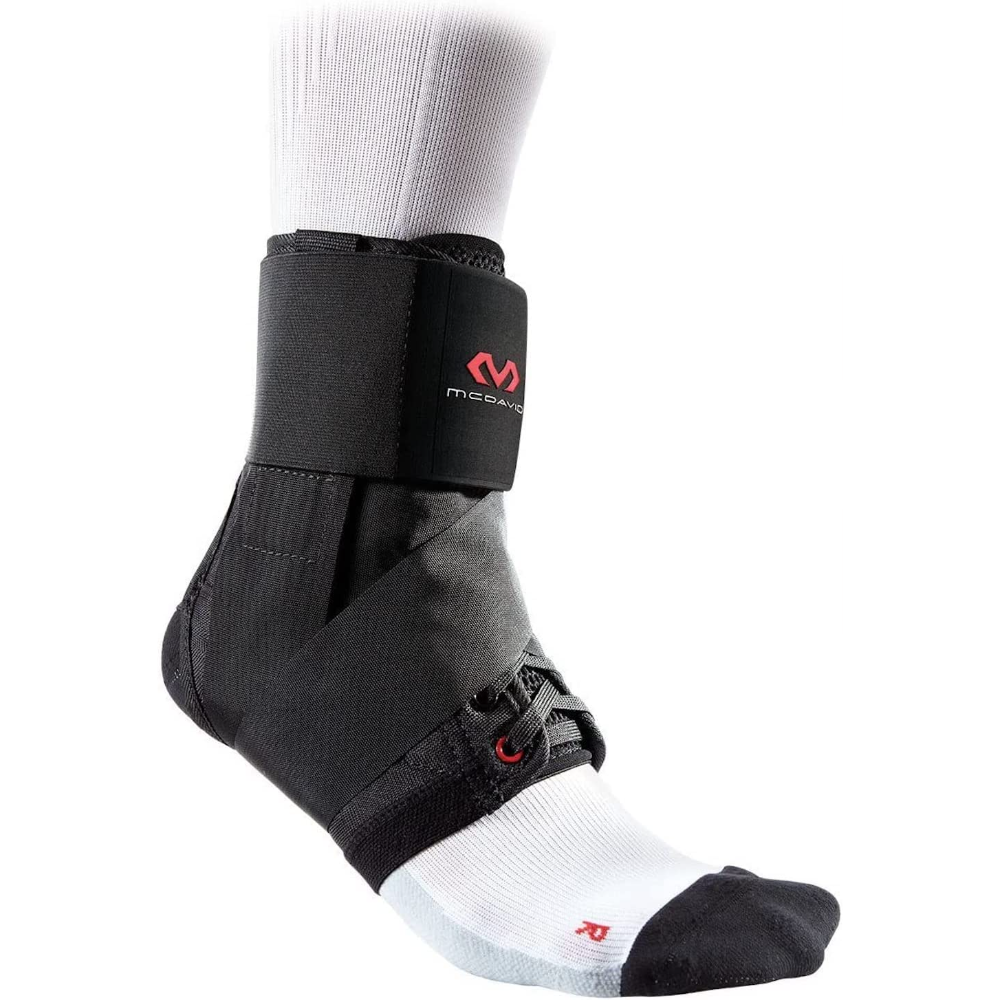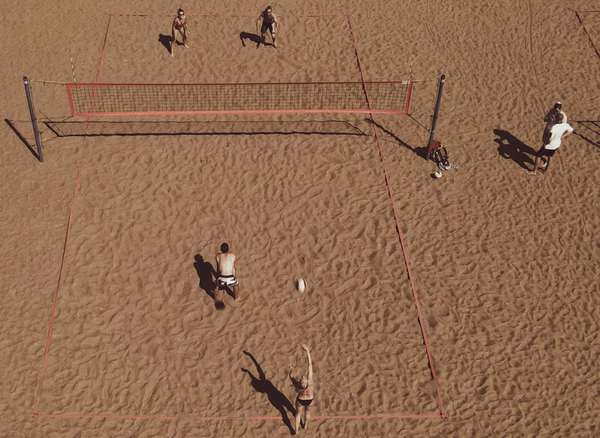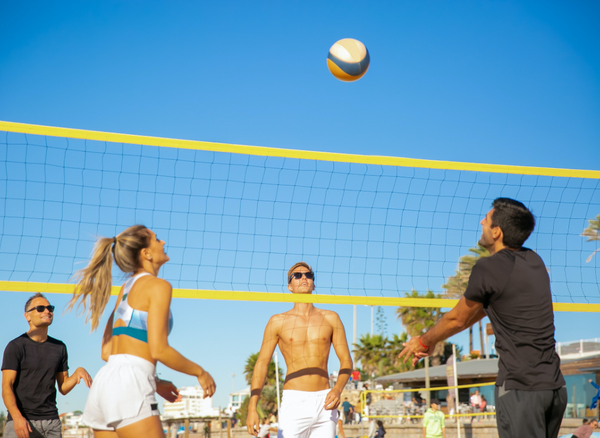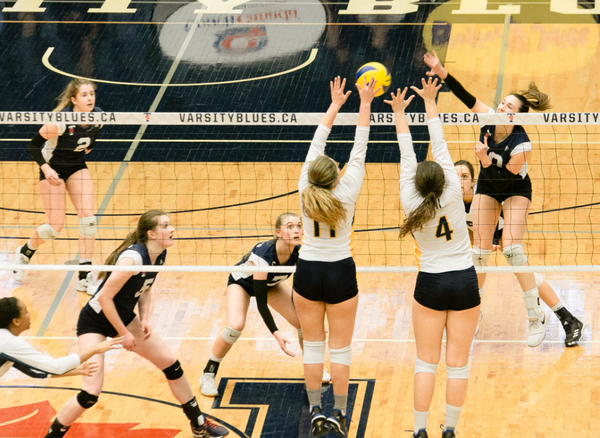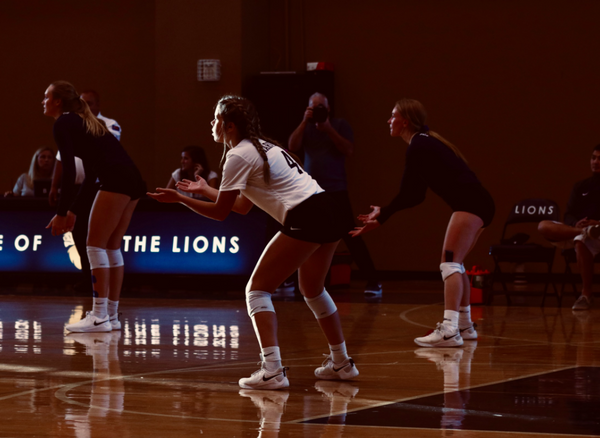Volleyball has become a high-risk sport, prompting players to take precautions against ankle injuries. Volleyballers who want the freedom to play without fear of sprains or twists can invest in an ankle braces for extra protection and a superior performance on the court - but which one?
You'll have heaps of options available so you need be sure that your selection is best suited for you. Stay tuned as we discuss potential pitfalls from not having volleyball ankles braces before revealing what features are worth checking out when making your purchase.
Ankle braces are necessary to play if you want to lower your risk of ankle injuries. This is because your ankles take on a significant amount of strain during a game due to the constant jumping and pushing off the floor.
Ankle braces are designed to provide support by limiting how far you can roll your ankle and preventing it from being overextended in any direction.
There are many different types available, ranging from simple neoprene sleeves with straps to more complex hinged braces which offer greater levels of protection and stability while still allowing adequate range-of-motion. The type chosen should be based on individual preferences and needs, so it's important to try out different options until you find one that works best for you.
In addition, wearing ankle braces benefits even if there isn't a history of previous injury or instability within the joint. They can help protect against future injuries by providing additional ankle support when making rapid changes in movement direction or intense lateral movements around the court.
So whether you're just starting out or advanced at playing, make sure you invest in some form of protective gear.
Factors To Consider when Looking for an Ankle Brace
Ankle sprains are incredibly common, with 1 in 4 people spraining their ankle at some point in their life. A good ankle brace can help speed up the healing process and get you back on the court. But with all of the different ankle braces available out there, which one do you choose? Here's some tips for you to consider when looking for one.
Comfort
Ankle braces perform to reduce the chances of injury. However, if they are uncomfortable; you will probably not wear them consistently. Many models have unique designs that can affect comfort.
Durability
If you're on the court a lot, you may need an ankle brace to withstand the game's intensity. Therefore, investing a little extra upfront is advisable to ensure the brace will last.
Purpose
Are you looking for an ankle brace to avoid injury or want a speedy recovery? As previously stated, a mechanical brace is acceptable for the former. For the latter, sleeves or gel braces are suitable.
Your Position
If you play a lot at the net, you will have more movements that put more stress on your ankles than other teammates. As a result, ankle braces with greater protection and durability are needed, but at the expense of mobility.
Adjustability
Ankle braces don't necessarily fit everyone. The best models allow for some degree of adjustment for a better fit. Braces should fit snugly while still allowing a full range of motion.
Breathability
Breathability is something you may ignore, yet it is essential for comfort. No one likes to sweat on a pair of non-breathable volleyball shoes; the same rule applies to braces.
Easy to slip On / Off
Some braces are great and rewarding but require a lot of time to lace up and strap. If you're unsatisfied with the time it takes, look for a brace that is easy to put on and take off.
Shoe fit
Some braces are small enough to fit under most shoes, while others are large enough to have to be worn with certain shoes. When wearing braces, consider the shoes you wear.
Ankle injuries that occurs in volleyball games
Volleyball is a sport that requires a high level of physical and mental performance. But it is not necessarily only inexperienced players who get injured; senior players often get injured too.
They tend to suffer from repetitive strain injuries like sprains, fractures, tendonitis, and dislocations caused by strenuous activity. If not treated early, these can cause permanent problems and further damage the joints. The injuries can have a severe effect on the professional careers of players.
Here we'll look at some of the most common ankle injuries:
Bursitis
Bursitis is caused by repeated movement and strain of tendons and inflammation of small pools of fluid between the moving bones of the ankle. The result is great discomfort, instability, and inability to bear weight.
Volleyball players often suffer from ankle bursitis because this game relies on movement. Warm-up exercises and ankle braces to strengthen muscles and ligaments are best to prevent or avoid such injuries. It will be highly beneficial for them to engage in volleyball activities.
Fractures
The extent of bone breakage in ankle fractures can range from a small crack in the bone to a complete break through the skin. Early symptoms include severe pain with difficulty standing, ankle swelling, pain, instability, and deformity of the affected area.
This type of accident occurs when a volleyball player fails to properly support, spike, or block, resulting in a fall and inability to get up. Treatment by a physician or trauma specialist is recommended, and depending on the severity of the injury, the need for emergency surgery is not out of the question.
Tendonitis
The tendons at the ankle back connect the muscles to the ankle joint and provide stability to the foot. Tendinitis occurs when the tendon becomes inflamed, making the foot unstable and causing severe pain when it touches the ground.
This is one of the most common injuries in volleyball and occurs when a player jumps for a block or spike and lands heavily on the ankle due to a rough ground condition or unintentional movement.
Another explanation could be the long period of unfavorable posture. If it continues during sports, despite an ankle injury, it can cause problems with other muscles or joints.
Dislocations
When stepping on the ground, the bones connected to the ankle are misaligned, causing great discomfort, deformity, and instability in the affected area.
Insufficient exercise or warm-up, severe falls after jumping for blocks or spikes, and lack of ankle mobility are all possible causes. The severity of the injury determines the treatment, but the main goal is to restore the bone to its original position.
How we chose Ankle Braces for Volleyball
Ankle injuries are common in volleyball, and can keep you from playing your best. If you've ever sprained your ankle playing volleyball, then you know how frustrating it can be. Not only does it sideline you from the game, but it also takes a long time to heal. The good news is that there are ankle braces specifically designed for volleyball players. A volleyball ankle brace offers support and stability to help prevent future ankle injuries. We've scoured the internet to help you find our top 3 picks of volleyball ankle braces.
🏅 Med Spec ASO Ankle Stabilizer
The elastic cuff closure on this gorgeous ankle stabilizer improves support and keeps laces and stabilizing straps in place. The design is bilateral so that each size can fit either a left or a right foot.
Why we ❤️ this ankle brace
The fact that each ankle brace is offered separately is what I appreciate most about it. Additionally, it uses US production with stricter requirements for quality control.
🏐 features
It incorporates stabilizing Straps that form a perfect figure-eight for maximum protection and support. Moreover, it contains ballistic nylon, which offers exceptional strength and durability. Also, this item is only intended for usage by one patient, which is extremely advantageous.
🥈 Active Ankle T2 Ankle Brace
The less-bulky brace's sleek framework involves feather-light, handmade EVA shock absorption. The EVA padding fits snugly around the ankle. However, they are individually sculpted for comfort and fit, making them stand out!
Why we ❤️ this ankle brace
This one provides the best possible functionality and durability for sports like tennis, basketball, and football. It comes with T2 Rigid Ankle Braces, which provide high protection. Moreover, it has a single quick-fit belt that is adjustable to fit both high-top and low-top boots.
🏐 features
It fits either the left or right foot. Moreover, it incorporates an anatomical bilateral hinge that enables a complete ankle range of motion for the foot. It is good for reducing the impact of sprains and strains because of the hinge.
🥉 McDavid Level 3 Ankle Brace with Straps
It's quite astonishing how fully customizable these are without taking the shoe off or unlacing the laces. It has strengthened latches and a padded interior, which functions best.
Why we ❤️ this ankle brace
The figure 6 strap pattern is reminiscent of sports tape. It consists of single-layer polyester fabric, providing maximum support and having little weight. The pressure top brace for a comfortable fit is a bonus.
🏐 features
The strapping pattern has a shape like a figure-6 to resemble sports tape. It has a vented tongue that is breathable. Additionally, many people like its soft padded lining and reinforced closures. Moreover, you can adjust it without removing the shoe or laces.
Volleyball Ankle Braces FAQs
Ankle injuries are common in volleyball, and can keep you from playing your best. Ankle sprains are one of the most common injuries in volleyball. They can keep you from playing, and sideline you for weeks. Volleyball ankle braces are designed to help prevent ankle injuries and speed up the healing process if you do get injured. Learn more from the Frequently Asked Questions.
How do volleyball ankle braces work?
Volleyball ankle braces are designed to provide support and stability to the ankles of volleyball players during physical activity. They help reduce the risk of ankle sprains, strains, and other injuries due to sudden movement or jarring impact.
The braces work by applying compression on the area around the ankle joint in order to restrict movement while still allowing range of motion.
The material of an ankle brace usually consists of straps that wrap firmly around your lower leg and foot with reinforced plastic shells that hug each side of your foot and lower leg. This prevents excessive motion in any direction which mitigates pain caused by instability, swelling, fatigue, fatigue syndrome and other problems associated with frequent playing.
Additionally, volleyball ankle braces can improve the overall balance when taking part in a game as it helps support weak muscles around your feet and ankles during quick changes from one direction to another. This is especially important if you have a previous history of injury or instability issues as they have been proven time again as an effective solution for reducing further damage done over time due to exhaustion or lack of proper form while playing.
Who should wear volleyball ankle braces?
Volleyball ankle braces should be worn by anyone regardless of their skill level. These braces are designed to provide support for your ankles during a game, reducing the risk of injury or strain. They also stabilize the foot and provide a firm base for jumping and pivoting movements.
It's important to note that not all ankle braces are suitable for all types of play; some may offer more protection than necessary while others may not offer enough support. It's best to consult a doctor or physical therapist before making a purchase so they can recommend which type is right for you.
When using an ankle brace, it is important to make sure that it fits and allows normal movement with minimal restriction on flexibility or range of motion. Also make sure it isn't too tight as this could cause discomfort and limit mobility even further. Additionally, ensure your shoes have arch support in order to keep proper alignment with your ankles when playing sports such as volleyball – additional comfort should be achieved this way too!
Is it okay to wear an ankle brace to bed?
Wearing an ankle brace provides extra stability and support during rest, which can help reduce the risk of developing pain or injury in the future. Depending on what type of condition you're looking to treat, wearing a brace at night can be beneficial for some people.
The best type of ankle brace generally depends on what condition you are treating and how severe it is. For common conditions like sprains or arthritis, a light support with some flexibility is usually enough for overnight use. However, if you have more serious injuries such as ruptured muscles or tendons then using an immobilizing splint may be necessary until the area heals properly.
It's also important to consider how well your specific ankle brace fits before sleeping in it overnight; it should not constrict circulation or cause any kind of discomfort while worn throughout the night. In addition, be sure that your braces allow adequate air flow so that moisture doesn't build up around your skin - this could lead to further issues like fungal infections if left unchecked. Overall, wearing an ankle brace at night has advantages but ultimately should depend on what specific needs you have and how comfortable it feels when worn.
Can wearing ankle braces cause ankle weakness?
Ankle braces are worn to provide lateral support and reduce the risk of injury when participating in sports or physical activity. While wearing ankle braces can help decrease the risk of an acute ankle sprain, prolonged use might weaken your ankle muscles over time. This is because with the support provided by the brace, your body may naturally rely on it more and lose its natural stability due to a lack of muscle activation.
Studies have found that while long-term bracing can cause decreased strength and mobility in ankles, it may also be beneficial for reducing reoccurring sprains or other injuries resulting from instability. For example, one study published in The Clinical Journal of Sports Medicine showed that athletes wearing prophylactic ankle braces had fewer sprains than those who did not wear them. However, both groups experienced reduced lower extremity strength over time regardless if they used a brace.
The takeaway is that people should not solely rely on their braces for stability but instead take proactive steps like strengthening exercises and proper stretching before physical activities to prevent further weakness caused by bracing. When properly used in conjunction with other prevention methods, there’s evidence that suggests ankle braces help protect against injury while limiting any potential weakening effects they may have had otherwise when improperly utilized alone
Recap
• Volleyball players, particularly aggressive ones, are prone to ankle injuries and can benefit from wearing an ankle brace for protection.
• Different types of volleyball ankle braces exist and should be chosen based on individual preferences and needs.
• Ankle braces provide stability, reduce the risk of injury, and can even protect against future injuries by providing additional support when making sudden changes in direction.
• Investing in some form of protective gear for your ankles is important for all levels of volleyball players.
Best Volleyball Ankkle Braces
There are different types of volleyball ankle braces throughout the market. Choose the one to make your on court experience safe and more enjoyable. We've discussed the necessary factors that will help you make an ideal purchase.
Furthermore, we also discussed a few ankle braces that can meet your criteria well. We hope the above reviews will help you choose an appropriate one. Good luck!
Keep safe!
Some of the links on this website may generate an affiliate commission, at zero cost to you. As an Amazon Associate, we earn from qualifying purchases. Your subscription and associate links helps make this site possible; and allows Gold Medal Ratings to exist. Thank you!


